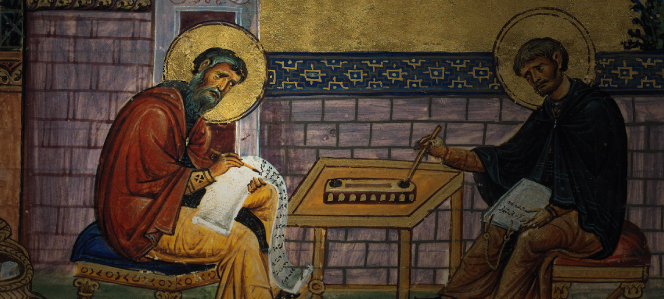Who doesn’t think about icons, right? Icons are all around us. Whether I am working at my day job or talking to those at home, the term icon is used daily. Unfortunately, it is usually in terms of “click on the icon in the corner of the screen” or “move the icon into a new folder.” Icons are everywhere; the youngest of preschoolers know all about icons. Likewise, iconoclasts are applauded. Iconoclast is a term used more often as a compliment than a condemnation.
Now here we are on December 4, celebrating a Saint most certainly associated with icons of a higher order and no ally at all to actual iconoclasts. Often overlooked by many of us in the preparations for the more ’fun’ Saint to be celebrated two days later in Advent – St. Nicholas, with the oranges, candy cane, chocolate coins and such – today we are honoring St. John Damascene. A Doctor of the Church, he is too important to be lost to those who are caught up in the extraneous hubbub that attaches itself to the days of Advent, as hard as we may try to avoid it.
Born in 676 to a family in the Christian minority of Damascus, pious legend abounds about this man (including a devious plot in which a scheme was launched which ended in John’s writing hand being chopped off by his employer – the caliph of Damascus – only to be miraculously restored). He was a “Renaissance man” centuries before the Renaissance. But what is vital to the story of St. John Damascene is the actual writing of his hand, be it never severed or divinely reattached. Eventually to be a monk (and later a priest), when Byzantine Emperor Leo III (The Isurian) decreed the destruction of icons, John wrote brilliantly, exhaustively, and comprehensibly on the acceptable use of sacred images. As he stated in his Apologia Against Those Who Decry Holy Images, “Because heathens do it foolishly, this is no reason for objecting to our pious practice.”
The century in which he lived is something of a soap opera of iconoclasm and Councils and denunciations. It is difficult for an amateur such as I to keep it all straight. But I know enough to be thankful for this Saint’s influence and the fact that this was satisfactorily resolved, for it is difficult to estimate the spiritual deficit that we would experience without icons.
Icons are not just pictures. Not only once educational for the illiterate, they are still a vehicle for making an invisible presence visible to humanity. Icons bring us theological truths through visual art in the same way theologians bring us truth with words.
This time of year, when we are trying to wait, in the Advent of our hearts, we are surrounded by a visual onslaught. This sensory overload threatens to encroach upon the peaceful territory in which we try to wait. Some of this barrage can border on the uplifting; for example, moments spent flipping through the Metropolitan Museum of Art Christmas catalog. Most is just an assault on the aesthetic and spiritual senses. More and brighter holiday lights, bigger inflatable lawn displays, crazier nativity scenes: marshmallow nativities, gnome nativities, rubber ducky nativities!!! Forcryingoutloud!
Ahem…now that I’ve composed myself, let’s come back to St. John Damascene and his gift to the Church. The visual world is essential to us and most certainly can act as a conduit for the Gospel. (“Christian iconography expresses in images the same Gospel message that Scripture communicates by words. Image and word illuminate each other.” CCC 1160 ) Sacred icons are a gateway to the divine, always pointing to Christ. They give us the opportunity for devotion with and beyond words.
Whether we are contemplating the iconography of particular saints or Gospel narratives, they always point us in the right direction. Christ is at the center. Be it a knee-weakening moment in front of the Mandylion of Edessa short contemplative break with the humble icon holy card kept at one’s desk, the icon brings us to Christ, even when words may fail us. There cannot be a better way to focus our hearts during Advent than to free ourselves of the surrounding noise – aural and visual – and connect with the sacred through icons. In the words of the Saint who we thank for preserving them for us, “The beauty of the images moves me to contemplation, as a meadow delights the eyes and subtly infuses the soul with the glory of God.”
